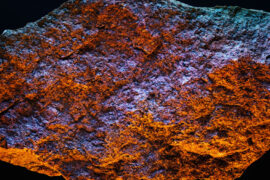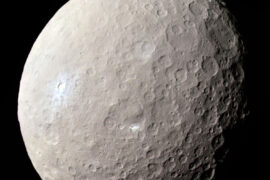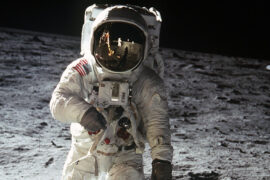Comets are an important part of the Solar system. For example, it is very likely that comets are the reason why there is water on our planet.
There are millions of them traveling around the Sun at all times. Learning more about comets helps us understand more about the universe and how it is all connected.
They are also one of the most impressive objects to see from Earth. When they are visible in the night sky they look like a bright, long streak of light. Seeing one is a very cool experience.
In this article, we’ll learn some of the most fun and interesting facts about comets so we can learn more about them. But first, let’s explain what is a comet.
What is a comet? (explained for kids)
A comet is just a big ball of ice and rock that travels through space. You can think of them as giant snowballs that are the size of an island.
When comets get closer to the Sun, the ice begins to melt, and tiny pieces of dust and gas are released. As they are left by the comet, they look like a beautifully illuminated tail that follows the comet’s path.
The tail of a comet can extend for millions of miles.
Sometimes our planet passes by an area of space where a comet previously passed by. Then, some of the small pieces of rock that the comet left enter Earth’s atmosphere and are burned, looking like a “shooting star”. Since there are many pieces of the comet, a lot of shooting stars can be seen in a short amount of time one after the other. We call those “meteor showers” and a couple dozen of them are visible every year. Maybe you can catch the next one. Check out our monthly meteor guide for that.
Comets, like meteors, sometimes also crash against a planet or a Moon.
Comet Facts for Kids
Comets are made of ice
Comets share many things in common with meteors, but the main difference between them is that comets have large amounts of ice. This is ice that was frozen in very low temperatures because comets come from the parts of the Solar system that don’t receive much sunlight.
Some of this ice is frozen water. But comets also contain other types of ice. For example, they can contain frozen gases like ammonia, carbon dioxide, and methane.
Comets live short lives
When comets travel close to the Sun, the ice in the melts. This process repeats many times as they travel around the Sun.
As a result, the comet runs out of ice after a few laps and all that is left is a large rock. At that point, the comet is no longer considered a comet and is now an asteroid or a meteoroid (not all asteroids started as comets, just a small minority).
The average comet only has enough ice to last for 10,000 years which is a lot of time, but compared to the age of planets or stars is just the blink of an eye.
Comets have orbits like the planets
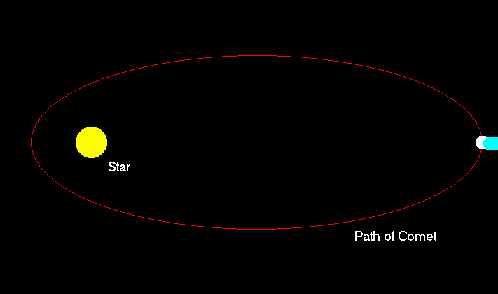
Comets travel around the Sun just like planets. The path they follow is called their orbit, and for most comets, this orbit has an elliptical shape (like a circle that is longer in one direction).
This is why comets are sometimes closer to the Sun, and sometimes they are very far away.
Depending on how close their orbits are to the Sun, comets are classified into short-period comets and long-period comets. The orbits of Short-period comets align on the same plane as the planets.
Comets come from the outer parts of the Solar system
There are two main sources of comets in the Solar system. The Kuiper belt, and the Oort Cloud. Both of these places are beyond Neptune, and very far away from the Sun and Earth.
The Kuiper belt is like a second asteroid belt and astronomers believe that many asteroids, comets, and even dwarf planets like Pluto originated there.
The Oort cloud is a huge area that is on the borders of the Solar system. It contains millions of icy objects of all sizes, including comets.
There are billions of comets in the Solar system
From Earth, we are only able to see a small number of all the comets that are out there in the Solar system. We only have a bit over 3,800 comets classified and named. But that doesn’t mean more comets are not out there.
Astronomers have evidence that suggests that there are billions of comets in the Solar system. Most of them are in the Kuiper belt and the Oort cloud.
Comets have three main parts
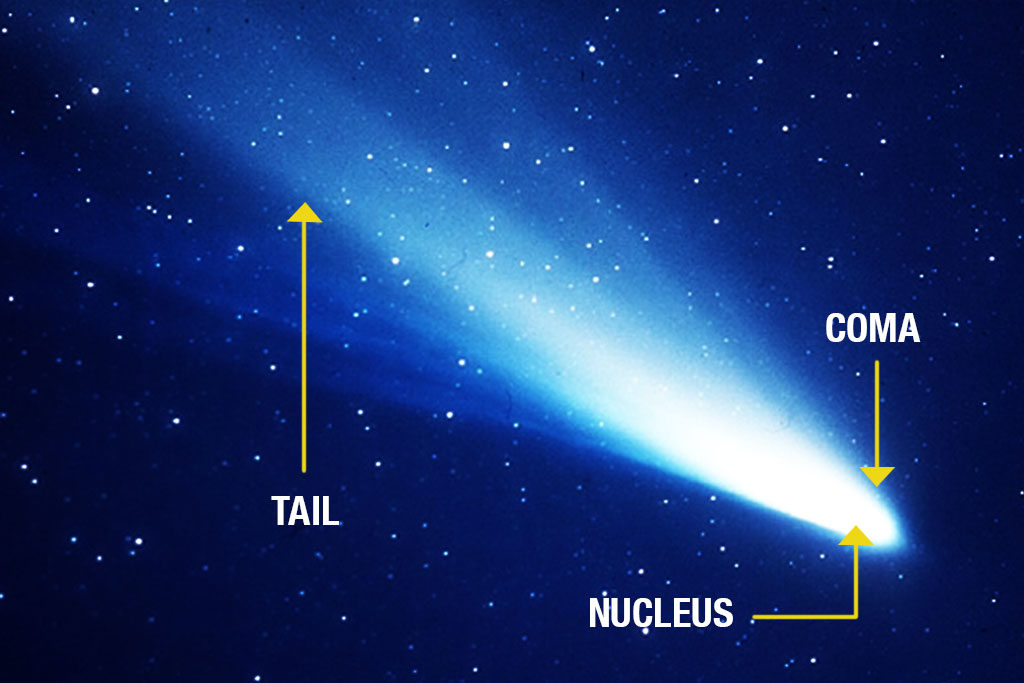
Comets have three main parts. A nucleus, a coma, and a tail.
The nucleus is the main body of the comet. It is the ball of rock and ice.
The coma is the area that surrounds the nucleus and is made of the gases that are being defrosted. It works a little bit like an atmosphere for the nucleus of the comet.
Finally, the tail is the part that we think about the most when we think of a comet. It is the bright trail of dust and gas leftover by the comet. The tail can extend for millions of miles although not all of it is visible. Some people also divide the tail into two parts. The dust tail and the ion tail.
Comets come in many sizes
Asteroids and meteoroids are classified according to their size. That is not the case for comets. Comets can be of any size.
Astronomers have found comets that are between 1 kilometer (0.6 miles) and 300 kilometers (186 miles) long.
Comets can take a very long time to complete one lap around the Sun
As we mentioned above, most comets are in the Oort cloud and outer edges of the Solar system. This means they are very very far away from the Sun.
Some comets can take up to 30 million years to complete just one orbit.
The comets that are visible from Earth usually also have long orbits
Most comets have the same age as the planets
Planets formed about 4.5 billion years ago out of a cloud of dust and gas called a protoplanetary disc. But out of this cloud, smaller objects like comets, asteroids, and meteoroids were also formed around the same time.
Comets were able to form on the outer parts of the Solar system because of the very low temperatures.
Only a few comets are visible from Earth
As we mentioned above, comets take a long time to orbit the Sun. This means they can take years to come back around and be visible from Earth again. For example, the Haley comet takes between 75 and 79 years to complete one orbit. It won´t be visible again from Earth until 2061.
Only one or two comets are visible every year without the help of a telescope. And only 10 or 20 are visible with a telescope.
So, if you have the chance to observe a comet, make sure to go outside and check it out because it will be a loooong time before you get another chance to see it.


